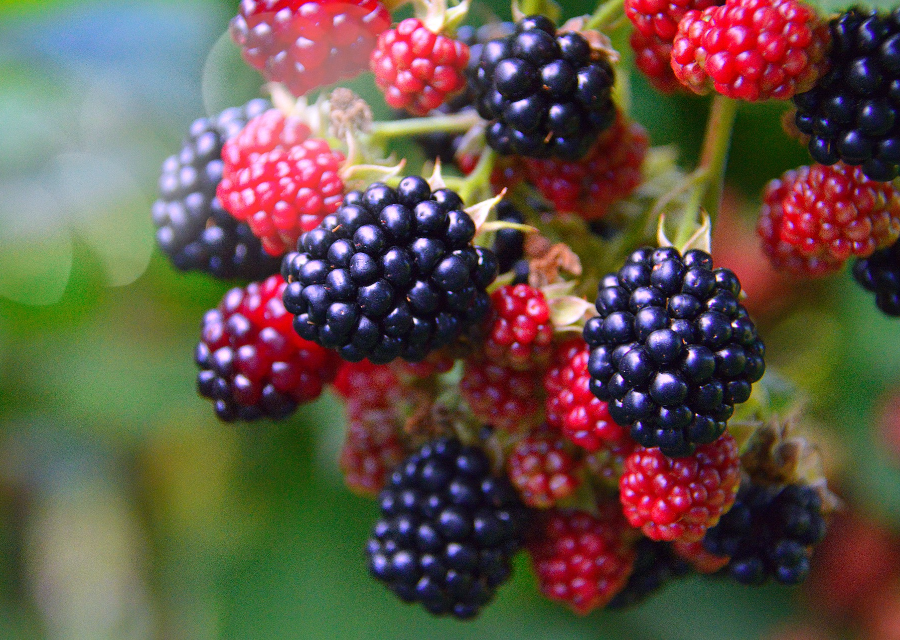Back
Blackberries
Cultivated blackberries are much easier to manage than their ‘wild’ equivalent, and can be eaten fresh or from frozen!
Blackberries are best started in winter. Bare-root plants (known as stools) are available from most garden centres and will require a bit of a soak before planting. It’s also worth noting that blackberries will provide fruit once they hit their second Summer, so patience is a must! Space is important too! Although less rampant than wild bramble bushes, your blackberries will still require some taming, as well as a sturdy support system. This could a wall, fence or simple cane structure.
When planting, ensure that the rootball is covered with a thick layer of soil (mulch, compost and fertiliser can also really help the growth process), and that plants are at least 1.5 metres apart. Blackberries also prefer free-draining soil and a sunny, yet shady, spot in the garden.
Top tips
– Remember to water young plants every 7-10 days during dry spells.
– After planting, trim all of the canes (branches). This may seem drastic but will mean lots of healthy, new shoots arrive in the spring! It is also important to cut canes down to soil level after fruiting.
– Birds love blackberries too! Covering your plants with netting or horticultural fleece, can help protect them from being eaten!
– Chicken manure can revitalise a tired looking plant!
Key timings
|
Jan |
Feb |
March |
April |
May |
June |
July |
Aug |
Sep |
Oct |
Nov |
Dec |
| Plant |
ü
|
ü
|
ü
|
ü
|
|
|
|
|
|
|
|
|
| Harvest |
|
|
|
|
|
|
ü
|
ü
|
ü
|
|
|
|
Our experience
When picking my blackberries, I found they can stain clothes and bruise very easily. Also, if you don’t plan on eating or cooking with them straight away, pop them in the freezer in a hard container and they’ll last for months!
Check out our recipe for Berry Compote too, blackberries add a delicious flavour and colour!
Back

